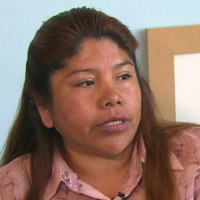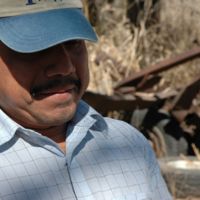
Anura
There are an estimated 6000 people living in conditions of modern slavery in Kuwait (GSI 2018). Men and women migrate from South and Southeast Asia, Egypt, the Middle East, and increasingly throughout Africa to work in Kuwait, predominantly in the domestic service, construction, hospitality, and sanitation sectors. The vast majority of migrant workers arrive voluntarily; however, upon arrival some sponsors subject migrants to forced labour, including through non-payment of wages, protracted working hours without rest, deprivation of food, threats, physical or sexual abuse, and restrictions on movement, such as confinement to the workplace and the withholding of passports. Many of the migrant workers arriving in Kuwait have paid exorbitant fees to labour recruiters in their home countries or are coerced into paying labour broker fees in Kuwait which, according to Kuwaiti law, should be paid by the employer—a practice making workers highly vulnerable to forced labour, including debt bondage. To a lesser extent, migrant women are also subjected to forced prostitution. Anura left Bangladesh for work in Kuwait. Thinking she would be working for a company, on arrival she was taken to a house and then taken to a brothel where she was held for 3 days before escaping.

Masuma
There are an estimated 15,000 people living in conditions of modern slavery in the United Arab Emirates which acts as a destination and transit country for men and women subjected to forced labour and sex trafficking. Foreign workers recruited globally account for over 95% of the country’s private workforce. Some are subjected to practices indicative to trafficking such as passport retention, non-payment of wages and substandard food and housing. Women travelling willingly to the UAE to work as domestic workers, massage therapists, beauticians, hotel cleaners, or elsewhere in the service sector, are sometimes subjected to forced labour or sex trafficking after arrival. At the end of May 2001, Masuma, 17 years old, was sent to Dubai by Siddique Ali, a local dalal. She was never picked up at the airport, instead she was forced to remain there, providing sexual services to pay for a ticket back home.

Zulekha
There are an estimated 15,000 people living in conditions of modern slavery in the United Arab Emirates which acts as a destination and transit country for men and women subjected to forced labour and sex trafficking. Foreign workers recruited globally account for over 95% of the country’s private workforce. Some are subjected to practices indicative to trafficking such as passport retention, non-payment of wages and substandard food and housing. Women travelling willingly to the UAE to work as domestic workers, massage therapists, beauticians, hotel cleaners, or elsewhere in the service sector, are sometimes subjected to forced labour or sex trafficking after arrival. Zulekha worked in a garment factory before leaving for Dubai in March 2001. She was 20 years old and unmarried. Though she had heard about the risks of girls being trafficked from Bangladesh, Zulekha chose to migrate anyway. Upon arrival she was taken to a house and provided a good meal. However, the next day Zulekha was taken to a hotel and forced to provide sexual services to men for 2 months. After this time Zulekha became pregnant and her broker sent her back to Bangladesh.

Flor (Narrative 1)
In 2001, Flor Molina was 28 years old and had just lost her youngest child. She was working two jobs in Puebla, Mexico, but not making enough money to feed and clothe her surviving children. At night, she took sewing classes. When her sewing teacher told her about a job in the United States, she accepted. But a woman confiscated her documents at the border. She was taken to Los Angeles, and immediately put to work in a sewing factory. There she worked 18-hour-days, was subjected to physical abuse, and wasn’t allowed to leave the building unattended. She escaped after 40 days and was helped by CAST, an LA-based NGO. She told her story in 2010, as part of the California legislature's hearings on the California’s Transparency in Supply Chains Act. The law requires companies doing business in California with more than $100 million in annual global profits to report their efforts to eliminate slavery from their supply chains. Flor is now a member of CAST’s Survivors Caucus, a group of women from numerous countries who escaped forced labor in the United States. Another narrative by Flor can be found in the archive.

Miguel
Miguel’s narrative marks a clear turning-point when he knew he could remain in bondage no longer: “A week before Easter it happened.” He told other workers: “Now is our time to leave.” Miguel had arrived in the US from Mexico in 2001, and ended up as a slave in a labor camp run by the Ramos family in Lake Placid, Florida, after being recruited in Arizona. He and several others were transported to Florida and then told they owed $1000 each for transportation. The Ramoses also deducted from their weekly pay for food, rent for substandard camp housing, and work equipment. Miguel sometimes ended up with only $20 a day, and had no control over records of payment and credit. His employers were armed with guns, watched for workers trying to escape, and cut off access to the outside world. Relatives of the Ramoses owned the stores where workers were taken to shop.Miguel reached the turning-point from slavery to freedom in 2001 with the help of the Coalition of Immokalee Workers (CIW), a community-based worker organization of over 2000 members in Immokalee, Florida’s largest farmworker community. Between 1997 and 2000, CIW helped end three modern-day slavery operations, resulting in freedom for over 500 workers, and in 2001 it began investigating the Ramoses. In November 2002, three members of the Ramos family were convicted of conspiracy to hold 700 workers in involuntary servitude. In May 2004 they were sentenced to a total of 31 years and nine months in federal prison.